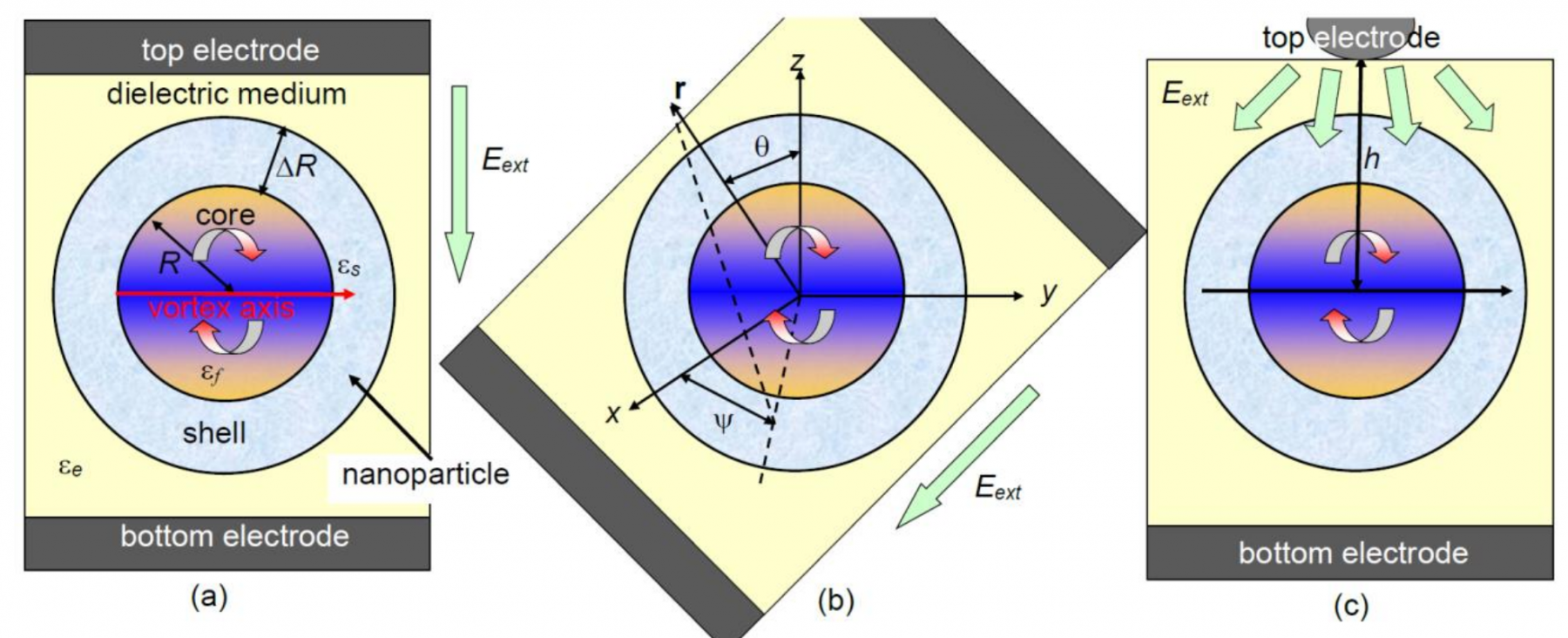In the framework of the Landau-Ginzburg-Devonshire approach coupled with electrostatic equations, we performed finite element modeling of the polarization behavior in a ferroelectric barium titanate core covered with a tunable paraelectric strontium titanate shell placed in a polymer or liquid medium. A stable two-dimensional vortex is formed in the core after a zero-field relaxation of an initial random or poly-domain distribution of the polarization, where the vortex axis is directed along one of the core crystallographic axes. Subsequently, sinusoidal pulses of a homogeneous electric field with variable period, strength, and direction are applied. The field-induced changes of the vortex structure consist in the appearance of an axial kernel in the form of a prolate nanodomain, the kernel growth, an increasing orientation of the polarization along the field, and the onset of a single-domain state. We introduced the term “kernel” to name the prolate nanodomain developed near the vortex axis and polarized perpendicular to the vortex plane. In ferromagnetism, this region is generally known as the vortex core. The vortex states with a kernel possess a manifold degeneracy, appearing from three equiprobable directions of vortex axis, clockwise and counterclockwise directions of polarization rotation along the vortex axis, and two polarization directions in the kernel. This multitude of the vortex states in a single core are promising for applications of core-shell nanoparticles and their ensembles as multi-bit memory and related logic units. The rotation of a vortex kernel over a sphere, possible for the core-shell nanoparticles in a soft matter medium with controllable viscosity, may be used to imitate qubit features.
Download “Article preprint” Electric_field_control_core_shell.pdf – Downloaded 237 times – 4 MB
Download a copy of the manuscript (preprint version)

